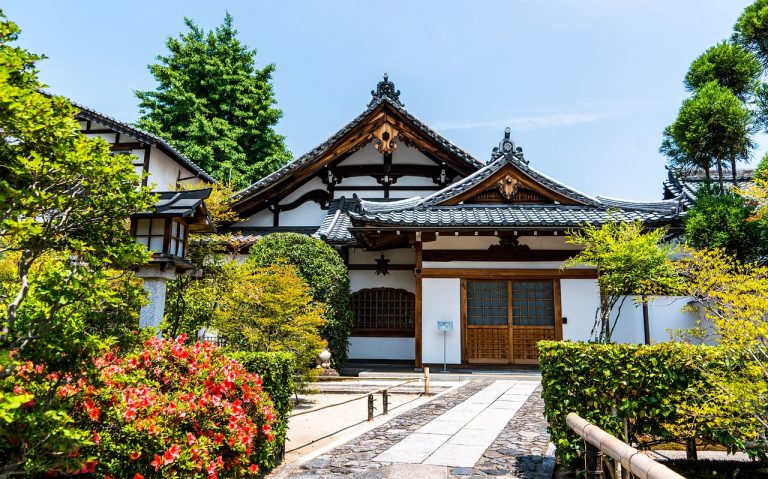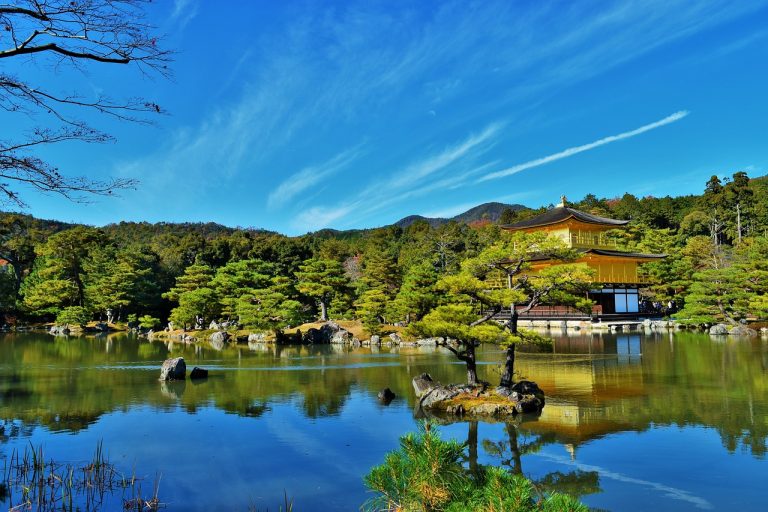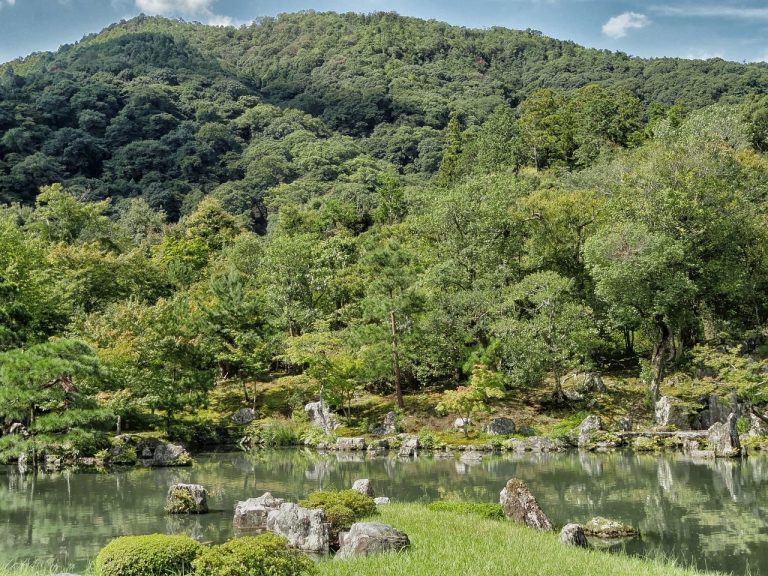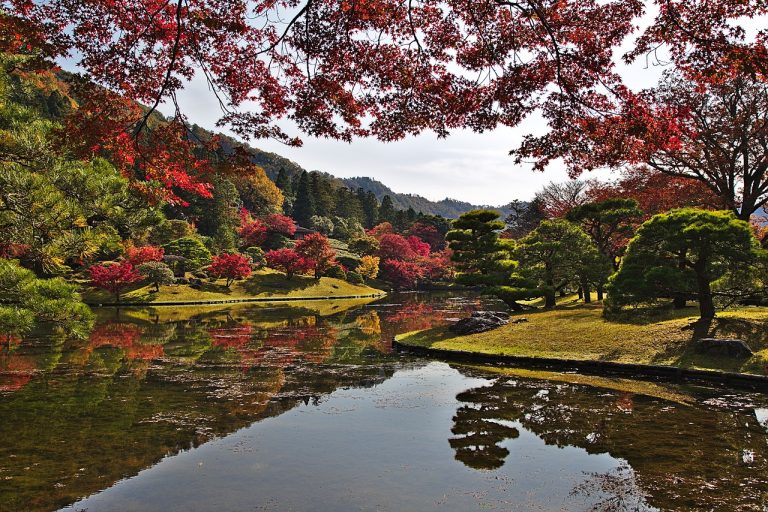Kyoto Japan Video
Historical Landmarks of Kyoto Japan: A Deep Dive
Located on the island of Honshu, Kyoto is a city in Japan that is steeped in rich history and culture. It served as the capital of Japan for over a thousand years, from 794 to 1868, and is known for its numerous historical landmarks. Let’s take a deep dive into some of the most significant historical landmarks in Kyoto.
Kinkaku-ji (Golden Pavilion)
- Emphasized Keywords: Kinkaku-ji, Golden Pavilion, Zen Buddhism
Kinkaku-ji, also known as the Golden Pavilion, is a Zen Buddhist temple that is one of Kyoto’s most iconic landmarks. Its top two floors are completely covered in gold leaf, creating a stunning reflection on the surrounding pond. Originally built in 1397 as a retirement villa for shogun Ashikaga Yoshimitsu, it was later converted into a temple after his death. Visitors can explore the meticulously landscaped gardens and experience the tranquility of this UNESCO World Heritage site.
Ginkaku-ji (Silver Pavilion)
- Emphasized Keywords: Ginkaku-ji, Silver Pavilion, Zen gardens
Ginkaku-ji, also known as the Silver Pavilion, is another famous Zen temple in Kyoto. Despite its name, the temple was never actually covered in silver. Built in the late 15th century, it was originally intended to be a retirement villa for shogun Ashikaga Yoshimasa. The temple is renowned for its beautifully designed Zen gardens, including the famous “Sea of Silver Sand.” Ginkaku-ji offers visitors a peaceful retreat and breathtaking views of the surrounding landscape.
Kyoto Japan Image 1: 
Kiyomizu-dera
- Emphasized Keywords: Kiyomizu-dera, wooden terrace, cherry blossoms
Kiyomizu-dera is a historic Buddhist temple that is renowned for its wooden terrace, which offers panoramic views of Kyoto. The temple was founded in 778 and is dedicated to the goddess of mercy, Kannon. One of its most famous features is the Otawa Waterfall, where visitors can drink from three different streams, each believed to have a different benefit. Kiyomizu-dera is particularly popular during the cherry blossom season when the temple and its surroundings are adorned with beautiful pink flowers.
Nijo Castle
- Emphasized Keywords: Nijo Castle, Edo period, Ninomaru Palace
Nijo Castle is a historical site that was built in 1603 as the residence of the Tokugawa shoguns. It served as an important center of power during the Edo period. The castle complex consists of multiple buildings, gardens, and moats. One of the main attractions within Nijo Castle is the Ninomaru Palace, known for its “nightingale floors” that squeak when walked upon to serve as a security measure against intruders. The palace’s exquisite architecture and beautiful gardens are a testament to the wealth and power of the shogunate.
Kyoto Japan Image 2: 
Ryoan-ji
- Emphasized Keywords: Ryoan-ji, Zen temple, rock garden
Ryoan-ji is a Zen temple renowned for its iconic rock garden. The garden consists of 15 carefully placed rocks on a bed of white gravel, which is meticulously raked each day. The arrangement of the rocks is such that only 14 can be seen from any vantage point, and it is said that achieving enlightenment allows one to see the 15th rock. Ryoan-ji also features beautiful gardens and a large pond filled with lotus flowers, creating a serene and contemplative atmosphere.
Kifune Shrine
- Emphasized Keywords: Kifune Shrine, Shinto shrine, water rituals
Kifune Shrine is a Shinto shrine located in the northern mountains of Kyoto. It is dedicated to the god of water and is believed to bring good fortune and protection against disasters. The shrine is known for its unique water rituals, where visitors can write their wishes on paper and then set them afloat on small boats in the shrine’s sacred spring. The shrine’s beautiful surroundings and peaceful atmosphere make it a popular destination for locals and tourists alike.
Kyoto Japan Image 3: 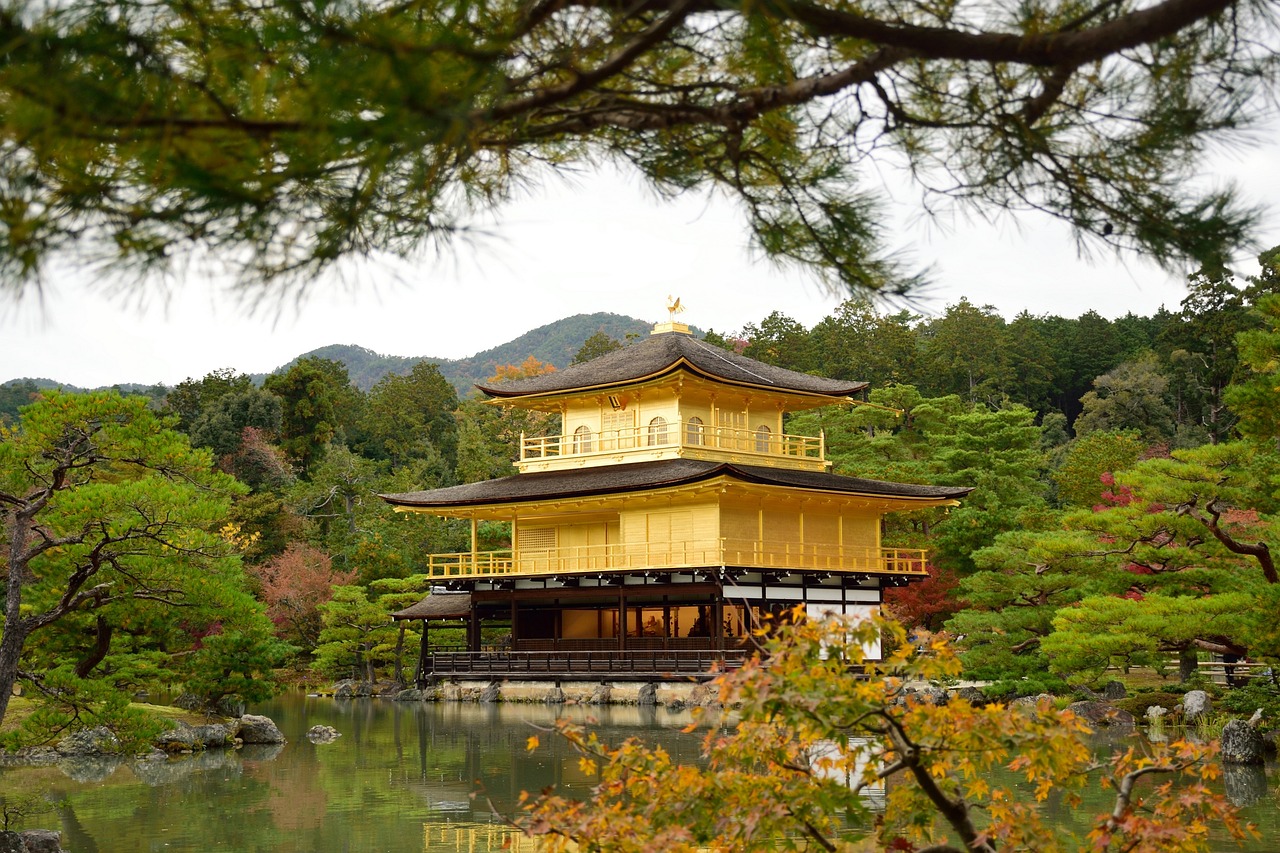
To-ji Temple
- Emphasized Keywords: To-ji Temple, pagoda, Buddhist statues
To-ji Temple, officially known as Kyoo-Gokoku-ji, is a Buddhist temple that houses numerous cultural treasures. The temple’s five-story pagoda is the tallest wooden tower in Japan and offers a commanding view of Kyoto. Inside the temple, visitors can admire a collection of Buddhist statues, including the famous Yakushi Nyorai, the Healing Buddha. To-ji Temple is also home to a bustling flea market held on the 21st of each month, attracting locals and tourists in search of unique crafts and antiques.
Arashiyama Bamboo Grove
- Emphasized Keywords: Arashiyama Bamboo Grove, Sagano Bamboo Forest, scenic walk
The Arashiyama Bamboo Grove, also known as the Sagano Bamboo Forest, is a mesmerizing natural wonder located in western Kyoto. Walking through the towering bamboo stalks creates a serene and otherworldly experience. The sound of the rustling leaves and the filtered sunlight create a tranquil atmosphere. The grove is particularly enchanting early in the morning or late in the afternoon when fewer crowds are present, allowing visitors to fully immerse themselves in the beauty of this unique landscape.
Fushimi Inari Taisha
- Emphasized Keywords: Fushimi Inari Taisha, torii gates, fox statues
Fushimi Inari Taisha is a Shinto shrine famous for its thousands of vibrant red torii gates that form a network of trails leading up the sacred Mount Inari. This iconic landmark is dedicated to the god Inari, associated with rice, agriculture, and prosperity. Along the trails, visitors will encounter numerous fox statues, believed to be Inari’s messengers. The hike to the summit offers stunning views of Kyoto and is a unique and immersive cultural experience.
Nanzen-ji
- Emphasized Keywords: Nanzen-ji, Zen Buddhism, Sanmon gate
Nanzen-ji is a Zen Buddhist temple complex that is known for its grand Sanmon gate, which serves as the main entrance. The temple was established in the 13th century and features beautiful gardens, tea houses, and a massive brick aqueduct. Visitors can explore the serene grounds, visit the Hojo, the former head priest’s residence, and enjoy the peaceful atmosphere that pervades this historic temple.
Conclusion
Kyoto is a city with a rich tapestry of historical landmarks that offer visitors a glimpse into Japan’s vibrant past. From iconic temples and shrines to stunning gardens and natural wonders, each landmark tells a unique story and contributes to the cultural heritage of Kyoto. Exploring these historical treasures allows visitors to immerse themselves in the beauty, spirituality, and history that Kyoto has to offer.
References
- Petit Palace Kyoto: petitpalace.co.uk
- Kinkaku-ji Official Website: kinkakuji.or.jp
- Ginkaku-ji Official Website: shokoku-ji.jp
- Kiyomizu-dera Official Website: kiyomizudera.or.jp
- Nijo Castle Official Website: nijo-jocastle.city.kyoto.jp
- Ryoan-ji Official Website: ryoanji.jp
- Kifune Shrine Official Website: kifunejinja.jp
- To-ji Temple Official Website: toji.or.jp
- Arashiyama Bamboo Grove Official Website: kyoto.travel
- Fushimi Inari Taisha Official Website: inari.jp
- Nanzen-ji Official Website: nanzen.net



